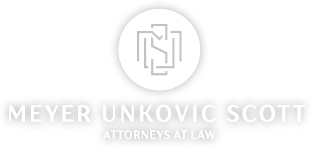In the increasingly competitive and globalized market, information is sacred. Companies secure it physically, digitally, and in the minds of employees. As such, entities that are about to enter a joint venture, merger, or any other type of collaborative transaction would be well-advised to get up to speed on how they handle commercial non-disclosure agreements (NDAs).
NDAs are legal contracts between parties that determine what information is deemed to be confidential and must be kept private. By their very nature, they are circulated prior to the parties actually agreeing to any business terms or sharing any information as part of a proposed transaction. Often, they are not given much thought as parties may be focused on the substance of the transaction and may not want to appear difficult in the early stage. Yet, this reluctance to review and revise an NDA can be a major error.
Some key considerations to keep in mind before signing an NDA:
- When receiving a proposed commercial NDA, the first matter to determine is whether it is a unilateral or mutual NDA. Unilateral NDAs generally only provide for the confidentiality and non-disclosure of one party’s material, which can be appropriate when only one party is sharing information. More commonly, both parties will be sharing information with one another – in which case a mutual NDA would be more appropriate. It would be a critical mistake to blindly sign a unilateral NDA, mutually share information and then erroneously believe that the shared information was validly protected.
- Additionally, an NDA must clearly define what information should be kept confidential, what information may be excluded, and who will have access to that information. In some instances, the parties can negotiate certain permitted disclosures, which often involve sharing information with representatives, such as accountants or attorneys of the company, or when compelled by law or if the information becomes public knowledge.
- Parties also need to think about what will occur at the end of the arrangement, whether by expiration or termination. Parties should consider adding a provision requiring that the disclosed information be destroyed or returned to the disclosing party. It is also important to ensure that the time periods for non-disclosure align with the parties’ needs – for example some standard NDAs only require confidentiality be kept for a year or two.
- The disclosing party should require a provision allowing for injunctive relief in the event of a breach or leak of information, whether deliberate or by accident. The disclosure of sensitive information may not cause immediate quantifiable damages, but it must be stopped or it could be catastrophic for companies in certain industries.
Addressing issues with an NDA before signing may require more effort, but it will reduce risk and save parties valuable time and money down the road. For more information on commercial NDAs or help in drafting one that protects your company, contact
Gary M. Sanderson or any other Meyer, Unkovic & Scott Corporate & Business Law attorney with whom you may have worked.
This material is for informational purposes only. It is not and should not be solely relied on as legal advice in dealing with any specific situation.

